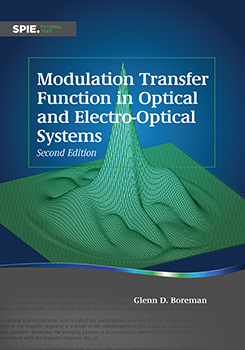|
Linear-systems theory provides a powerful set of tools with which we can analyze optical and electro-optical systems. The spatial impulse response of the system is Fourier transformed to yield the spatial-frequency optical transfer function. These two viewpoints are equivalent ways to describe an object—as a collection of points or as a summation of spatial frequencies. Simply expressing the notion of image quality in the frequency domain does not by itself generate any new information. However, the conceptual change in viewpoint—instead of a spot size, we now consider a frequency response— provides additional insight into the behavior of an imaging system, particularly in the common situation where several subsystems are combined. We can multiply the individual transfer function of each subsystem to give the overall transfer function. This procedure is easier than the repeated convolutions that would be required for a spatial-domain analysis, and allows immediate visualization of the performance limitations of the aggregate system in terms of the performance of each of the subsystems. We can see where the limitations of performance arise and which crucial components must be improved to yield better overall image quality. We directly see the effects of diffraction and aberrations at various spatial frequencies. In Chapter 1 we develop the transfer-function concept and apply it to classical optical systems—imaging systems alone without detectors or electronics. We will first define terms and then discuss image-quality issues. |
|
|


